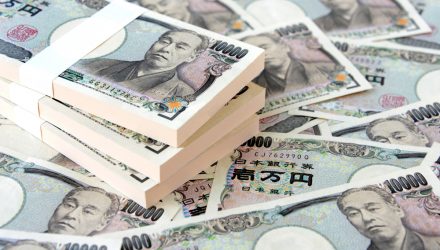Warren Buffett recently made waves when his Berkshire Hathaway announced it took stakes in five Japanese trading firms.
Value-seeking investors could look to developing markets like Japan if they want to stay away from the heightened risk posed by investing in emerging markets.
An avenue for advisors looking to give clients some exposure to Japanese equities without direct commitment is via the Developed International Model Portfolio, which is part of WisdomTree’s Modern Alpha lineup of model portfolios.
“This model portfolio is designed for investors with a long-term horizon looking for exposure to a broad universe of Developed International equities primarily using factor focused ETFs,” according to WisdomTree. “The selected ETFs provide certain factor tilts that have the potential to generate excess return relative to comparable cap-weighted benchmarks over longer-term holding periods. The strategies may use both WisdomTree and non-WisdomTree ETFs.”
That model portfolio features one Japan-specific ETF and several diversified developed markets ETFs with exposure to the Land of the Rising Sun.
Examining the Portfolio
One of the members of the Developed International Model Portfolio is the WisdomTree Japan Hedged Equity Fund (NYSEArca: DXJ).
A fund such as the WisdomTree Japan Hedged Equity Fund can help investors gain exposure to Japan’s local markets without worrying about potential foreign exchange currency risks in case of a weakening yen currency or stronger U.S. dollar.
“WisdomTree has a dividend-weighted basket of Japanese companies called the WisdomTree Japan Hedged Equity Fund (DXJ). DXJ currently gives more weight to these soga shosha than market cap-weighted Japan indexes, thanks to their current high dividend levels,” said WisdomTree Research Director Jeremy Schwartz in a recent note. “DXJ owns four of the five companies Buffett bought at a weight of 6% of its portfolio, compared to just 3.5% for the five companies in the MSCI Japan Index.”
Japan does show some solid fundamentals. Specifically, the weaker yen, strong corporate fundamentals, bargain valuations and central bank buying are all positives. Furthermore, Japan’s political temperature is relatively stable. Additionally, stocks in the world’s third-largest economy are inexpensive relative to their U.S. counterparts. Plus, DXJ offers allure as a yield idea.
“The current dividend yield of DXJ, while lower than Buffett’s Japan portfolio, is now approaching twice the level of the S&P 500, at over 3%,” notes Schwartz. “Japan was not known as a high dividend country for decades. But a renewed focus on returning cash to shareholders and improving returns on equity have made Japan a dividend growth leader. While S&P 500 dividends grew 10% a year for the last decade, and prices appreciated with that dividend growth, Japanese dividends grew 8.5% a year for the last decade and generally, prices were up less (about 7%).”
For more on how to implement model portfolios, visit our Model Portfolio Channel.
The opinions and forecasts expressed herein are solely those of Tom Lydon, and may not actually come to pass. Information on this site should not be used or construed as an offer to sell, a solicitation of an offer to buy, or a recommendation for any product.








